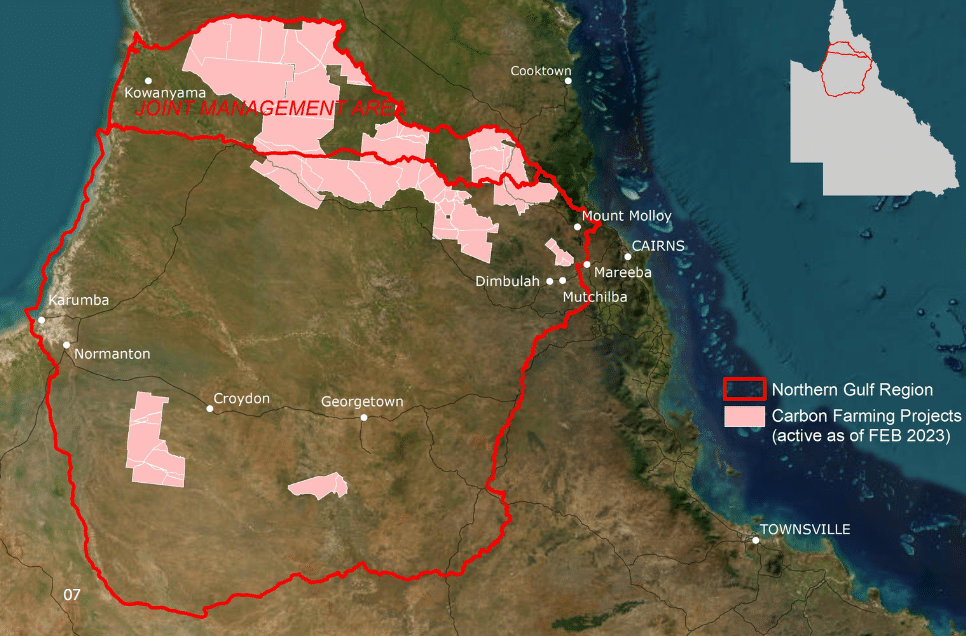Carbon farming, carbon sequestration, green carbon, blue carbon… there has been lots of talk about this right across the Northern Gulf region for many years. Most people know vaguely what it’s about, often consider it difficult and confusing, sometime in the future there might be projects in the region, but typically not much more—yet!
Visible light, such as sunlight hitting the earth, passes though greenhouse gases in our atmosphere. However, when this light hits the Earth’s surface, some of it is changed to infrared energy (heat). Greenhouse gases absorb and remit this as heat, preventing it being lost back into space. It’s carbon dioxide (CO₂) we typically think about when we hear the term greenhouse gas, but there are a range of gases that can do this, including water vapour.
This is a good thing for life on Earth. Without this going on, Earth’s average temperature would be about 30°C colder (-18°C rather than +14°C) and our planet would pretty much be a frozen ball of snow drifting through space. However, just like chocolate, you can have too much of a good thing.
The short story is that as we humans do the range of things we do—especially digging up and burning fossil fuels (oil, gas, coal)—this releases the carbon that was once stored. This is currently happening at about 40,000,000,000t per year. That increases the percentage of carbon in our atmosphere, and therefore increases its ability to trap and hold heat.
Carbon farming (now more correctly called an Emissions Reduction Fund project) is the broad term for projects that look to reduce the percentage of carbon dioxide in the atmosphere. Carbon farmers are not paid to produce beef or grain, but to instead pull carbon out of the atmosphere and store it away (sequester it) in a stable form like soil carbon or wood in trees.
Carbon farmers can also be paid to not release as much carbon as they otherwise would, such as by not clearing native vegetation, or changing the way country burns (with cooler fires that emit less carbon dioxide).
People may be surprised just how many carbon projects are currently underway in our region, with about 15% (or 2,945,579 ha) of the Northern Gulf’s total area under existing approved projects. Meat & Livestock Australia have also released a carbon calculator as part of their suite of tools for red meat producers.
Read the full article in the Gulf Croaker:

